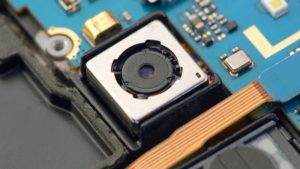Smartphone cameras are no longer just the most convenient option — they are quickly becoming the best choice for keen photographers, even beating out traditional point-and-shoot digital cameras with computational power and innovation.
Improved sensor size and resolution in today’s smartphone cameras mean users can capture more details and render images accurately in complex lighting conditions. Artificial intelligence (AI) algorithms have enhanced many facets of image processing. And they’re not done yet. Users can expect a slew of changes in 2022 and beyond, with smartphone cameras offering more power than ever before at lower price points.

Also read: Buyer’s Guide: Best Smartphones for Every Budget
But, what should users look out for when shopping for a smartphone with a capable camera? Here are a few smartphone camera trends to look out for in 2022:
Dual OIS
Smartphone manufacturers are countering blurry and shaky photos through Optical Image Stabilisation (OIS) technology. The OIS system stabilises the image or video by “shifting” the lens to counter the shakes.
According to Jimmy Hsu, Tecno’s Senior Product Manager: image technology, pre-2019 the trend was for OIS to be about one degree of stabilisation. In 2021, standard stabilisation increased to three degrees thanks to pan-tilt OIS. Tecno says in 2022 it aims to introduce the first Android phone with sensor-shift. “Compared to conventional OIS, Tecno’s sensor-shift technology can achieve a response frequency of 5 000 adjustments per second,” explains Hsu. By combining lens shifting seen in conventional OIS systems and the newer sensor shift technology, Tecno is setting its sights on stabilisation up to five degrees.”

High-resolution sensors with pixel binning
Sensors with a high pixel count tend to capture more details from the scene. However, the size of pixels on such sensors is usually smaller. Smaller pixels means less light is captured, impacting image quality in darker environments. Some manufacturers are now deploying an algorithm-driven technique called pixel binning that enables high-resolution sensors (with a small pixel size) to perform better in low-light conditions. It causes smaller, individual pixels to ‘combine’ to act like bigger pixels, thereby letting in more light.
Continuous optical zoom
Phones are getting sleeker, but these aesthetics can be a technological challenge for manufacturers wanting to incorporate bulky telephoto lenses. The solution is to offer continuous optical zoom, which will allow users to shift between different focal lengths smoothly. This requires precise movement of lenses within small spaces without affecting image quality. Experts predict the market could see continuous optical zoom in the second half of 2022, allowing users to shift between 3x to 5x optical zoom.

Also read: Huawei Nova 9 Launches in SA
RGBW Sensors
While smartphone manufacturers use different techniques to enhance low-light performance, RGBW (Red, Green, Blue and White) technology addresses the issue at the sensor level. The camera sensor captures colour information through a mechanism called the Colour Filter Array (CFA). Traditional camera sensors use CFAs arranged in the Bayer format, which comprises a pattern of Red (R), Green (G), and Blue (B) filters. RGBW sensors add White (W) filters to the mix.
According to Hsu, adding white pixels increases light sensitivity by 60%, which means the sensor should be able to absorb more light. Smartphone manufacturers are also developing Glass+Plastic lens technology. Many smartphone lenses are constructed out of plastic, but introducing glass elements into the lens construction will help to improve the transmission of light.
Localised algorithms
Smartphone software is playing a more significant role in determining the final image or video quality of these portraits. Some smartphone manufacturers are using big data and deep neural networks to drive personalised and localised image processing.

Also read: Tecno Camon 17P Review: A Mid-Tier Device Punching Above its Weight?
Take, for instance, Tecno’s TAIVOS signal processing technology recognises and accurately reproduces dark skin elements. According to Hsu, the company uses a large dark skin database to “produce more than 6,120 Evaluation Scenarios spanning 115 countries”. For portrait photography, the AI engine recognises and classifies different elements such as faces and hair colour to determine the subject’s age, gender, and skin tone. The photo is then optimised for better clarity, colour, and light, which helps with more accurate reproduction of darker skin tones – even in low-light environments.
Scene, light, and colour enhancement
With traditional photography, professional photographers use their experience and training to make adjustments that highlight not just the subject, but also background scene elements. They also typically spend significant time in post-production that brings images to life.
Experts agree that these capabilities need to be provided in default mode.
That’s where AI-driven image processing comes in. According to Counterpoint Research’s whitepaper, AI is becoming advanced enough to recognise dynamic scene elements such as trees or sky in the background. Once identified, the image-processing system optimises their colour, contrast, and exposure. AI will also help interpret light information.

Time of flight and dynamic vision sensors
Photos with sharply rendered foreground and blurred background can make for a pleasing effect – especially while shooting portraits. However, to do this, the smartphone must recognise depth and subject edges. With Time of Flight (ToF) and Dynamic Vision Sensors (DVS) improving, smartphones will get better at generating 3D models of the scene and detecting edges. This will allow for more precise measurements and offer users features such as enhanced and gradual blurring of backgrounds.
A more cutting-edge and affordable 2022
The advancements will not be defined just by cutting-edge features on pricey smartphones. It’s a win across budget tiers: the developments result not just in technological advancement, but also trickle-down premium features to smartphones in the low and medium price bands.
Find the best price on smartphones online with PriceCheck now:





